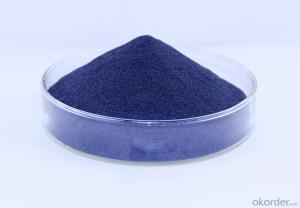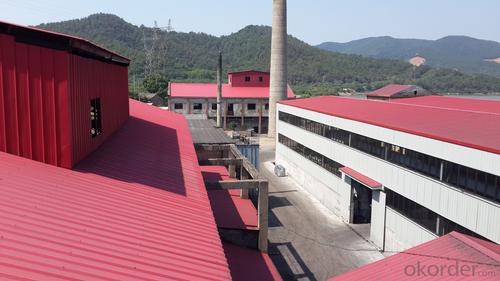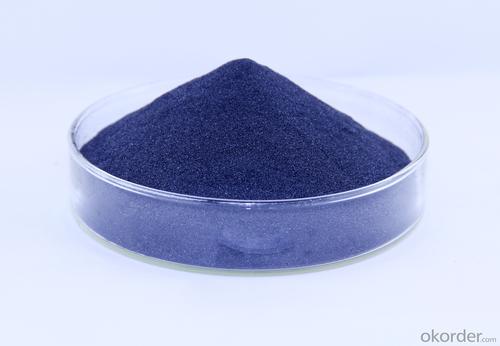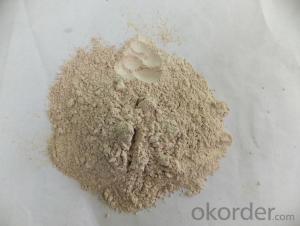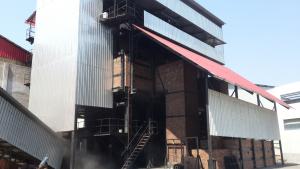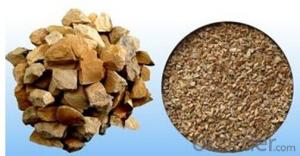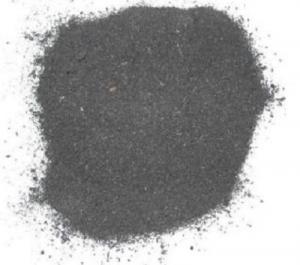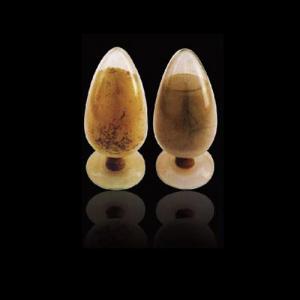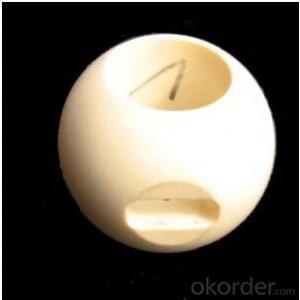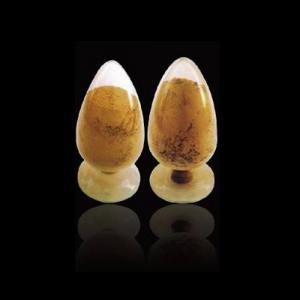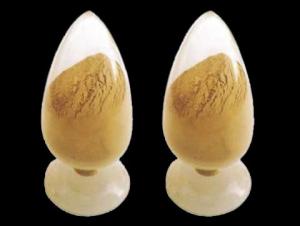Monolithic Refractories for Iron and Steel Industry - Raw Carbon Material Made by Carbon Filler
- Loading Port:
- China main port
- Payment Terms:
- TT or LC
- Min Order Qty:
- 20 m.t
- Supply Capability:
- 1000 m.t/month
OKorder Service Pledge
OKorder Financial Service
You Might Also Like
Calcined Petroleum Coke
FC:98.5%min,
S:0.5%max
A:0.8%max
V:0.7%max
Mositure:0.5%max
Size:1-5mm
Technology:
Laborary Equpment
In our lab,we has a high precision balance,mullfe furnace,sample making machine, dring box,sulfur measurement instrument and other calibratiing equipments.As a result,before deliverung to our customers,our products have to pass a strict test to ensure the quality and components.The testing reports will be sent to our customers to confirm untill they satisfy with it.
Packaging & Delivery
Packaging Detail:25kg paper bag into 1t weaving bag 5kg, 10kg and 20kg weaving bag into 1t weaving bag 25kg weaving bag put on pallet covered with entanglement wrap product direct into packing bag 25kg paper bag put on pallet covered with entanglement Wrap 25kg weaving bag into 1t weaving bag.
Delivery Details: 7 days
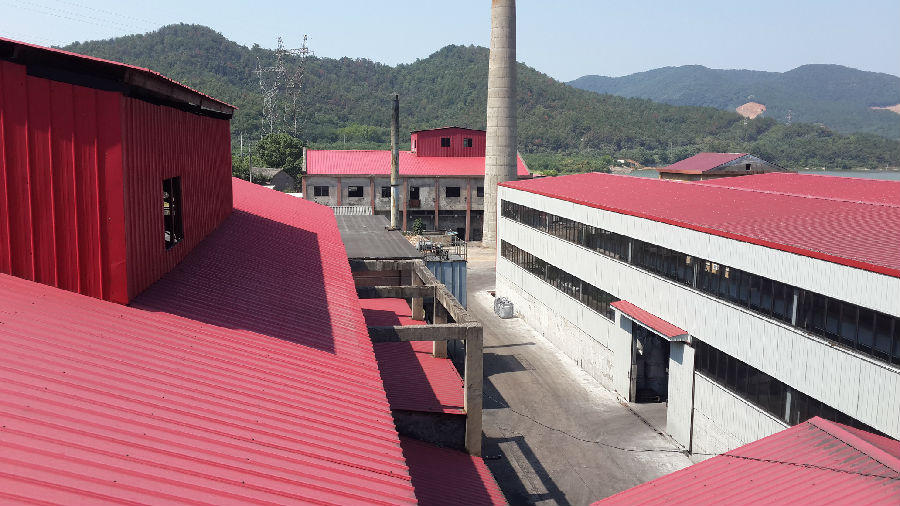

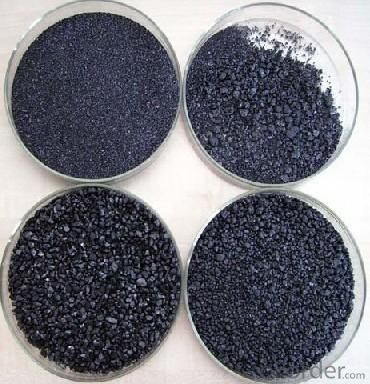
Factory Background
The factory is majorly running and operating carbon additive (pitch coke, calcined petroleum coke and anthracite), low nitrogen carbon additive, and brake pad making material. Company is the long term supplier of Sinosteel Corporation, Shanghai Carbon Corporation, the plant of SGL Group the Carbon Company in China and some largest special carbon products producing plants.
YUAI also supplies huge amout of high quality carbon additive and graphite carbon additive to steel plants, foundries and ferrotungsten plants. YUAI has been assigned by BAO STEEL as the only organization for processing pitch coke for export purpose. The group’s major products are constantly exported to Japan, Korea, Malaysia, South East Asia countries, Europe and America, which receive praises by our consumers.
The group has invested numbers of calcinators in Anhui China to ensure the capability of producing and processing huge amount of carbon additive. Further investment is on process. According to the orders from customers, YUAI is able to processing and providing different specifications of carbon additive and other products. To provide best quality of products and to offer customers most satisfied service is YUAI’s operating objectives.
Our Service:
1. Your inquiry related to our products or prices will be replied in 24hours.
2. Manufacturer with large capacity, ensure the fast production cycle after confirmed the order.
3. Our professional technicians will answer your entire enquiry in patient.
4. To meet the refractory solutions, we can serve as your instructions.
5. Protection of sales area and private information for our entire customer.
If you’ve kind enquiries, please don’t hesitate to let us know. ^_^
- Q: How does the composition of monolithic refractories impact their performance?
- The composition of monolithic refractories plays a crucial role in determining their performance. Monolithic refractories are essentially unshaped refractory materials that are used to line furnaces, kilns, and other high-temperature equipment. They are preferred over traditional brick and mortar refractories due to their ease of installation and ability to conform to complex shapes. The composition of monolithic refractories includes various components such as aggregates, binders, and additives. The type and proportion of these constituents significantly influence the physical, mechanical, and thermal properties of the refractory material. Aggregates are the major component of monolithic refractories and provide the structural integrity. They can be made of various materials like alumina, silica, magnesia, and carbon. Each aggregate has its own unique properties that determine the refractory's resistance to heat, chemical attack, and mechanical stress. For example, alumina aggregates offer excellent resistance to high temperatures and chemical corrosion, while carbon-based aggregates are preferred for their high thermal conductivity. Binders are added to the mix to provide cohesion and improve the refractory's strength. Common binders include clay, calcium aluminate cement, and colloidal silica. The selection of binders depends on the desired strength, workability, and setting time of the refractory material. Additives are incorporated in the composition to enhance specific properties. They can improve the refractory's resistance to thermal shock, abrasion, or chemical attack. Additives like zirconium oxide, silicon carbide, and graphite are often used to enhance the performance of monolithic refractories in specific applications. The proper combination and proportion of these constituents are crucial for achieving the desired performance of monolithic refractories. The composition affects the refractory's thermal conductivity, thermal expansion, density, porosity, and chemical resistance. For instance, a higher alumina content would improve the refractory's resistance to high temperatures and chemical corrosion, while a higher silica content would enhance its insulating properties. In conclusion, the composition of monolithic refractories has a significant impact on their performance. The selection of aggregates, binders, and additives must be carefully considered to achieve the desired properties and ensure optimal performance in specific high-temperature applications.
- Q: What are the advantages of using insulating castables in the iron and steel industry?
- There are several advantages of using insulating castables in the iron and steel industry. Firstly, insulating castables provide excellent thermal insulation. They have low thermal conductivity, which helps to minimize heat loss from the furnaces and other equipment. This is particularly important in the iron and steel industry, where high temperatures are required for various processes. The insulation provided by castables helps to maintain a stable temperature within the furnace, resulting in improved energy efficiency and reduced fuel consumption. Secondly, insulating castables have high strength and excellent resistance to thermal shock. This is crucial in the iron and steel industry, where extreme temperature changes are common. The castables can withstand rapid heating and cooling cycles without cracking or compromising their structural integrity. This ensures the longevity and durability of the refractory lining, reducing the need for frequent maintenance and repairs. Furthermore, insulating castables are lightweight and easy to install. Their low density makes them easier to handle and transport, resulting in reduced labor costs and shorter installation times. This is particularly advantageous in large-scale iron and steel plants, where time and cost efficiency are critical. Moreover, insulating castables offer good corrosion resistance. The harsh environment in the iron and steel industry, with the presence of molten metal, slag, and various chemicals, can cause corrosion and erosion of refractory materials. Insulating castables are designed to withstand these corrosive conditions, ensuring the longevity of the lining and minimizing the risk of downtime and production disruptions. Lastly, insulating castables are versatile and can be customized to meet specific requirements. They are available in various compositions and densities, allowing for tailored solutions to different applications within the iron and steel industry. This versatility ensures optimal performance and efficiency in various furnace and equipment designs. In conclusion, the advantages of using insulating castables in the iron and steel industry include excellent thermal insulation, high strength, resistance to thermal shock, lightweight installation, corrosion resistance, and versatility. These benefits contribute to improved energy efficiency, reduced maintenance costs, increased durability, and enhanced overall productivity in the industry.
- Q: What are the specific requirements of monolithic refractories for blast furnace applications?
- Monolithic refractories used in blast furnace applications have specific requirements to withstand the harsh conditions and high temperatures within the furnace. Some of these requirements include: 1. Thermal stability: Monolithic refractories need to have excellent thermal stability to withstand the extreme temperatures encountered in blast furnaces. They should resist thermal shock and maintain their physical and chemical properties at high temperatures. 2. High strength: Blast furnace conditions exert significant pressure and mechanical stress on refractory linings. Therefore, monolithic refractories need to have high strength and resistance to mechanical wear to withstand the weight of the burden and the movement of materials inside the furnace. 3. Chemical resistance: Blast furnace environments are highly corrosive due to the presence of molten metals, slag, and gases. Monolithic refractories should exhibit excellent chemical resistance to prevent chemical reactions with the molten material and gases, which can lead to refractory degradation. 4. Erosion and abrasion resistance: The materials being processed in a blast furnace can cause erosion and abrasion, leading to wear of the refractory lining. Monolithic refractories used in blast furnaces should be able to withstand these erosive and abrasive forces to ensure a longer service life. 5. Low porosity: Blast furnace refractories should have low porosity to minimize the penetration of molten materials and gases, which can cause refractory spalling and damage. Low porosity also helps in maintaining the thermal stability and overall performance of the refractory lining. 6. Dense structure: The refractory lining in a blast furnace should have a dense structure to prevent the penetration of molten slag and metal into the lining, which can cause refractory failure. A dense structure also aids in the refractory's heat insulation properties. 7. Easy installation: Blast furnace refractories need to be easily installed and repaired due to the frequent maintenance and repair requirements of blast furnaces. Monolithic refractories offer the advantage of easy installation, as they can be cast, gunned, or sprayed onto the refractory surface, allowing for quick repairs and reduced downtime. Overall, the specific requirements of monolithic refractories for blast furnace applications include thermal stability, high strength, chemical resistance, erosion and abrasion resistance, low porosity, dense structure, and easy installation. Meeting these requirements ensures the durability and efficiency of the refractory lining, leading to improved blast furnace performance.
- Q: What are the main factors affecting the corrosion resistance of monolithic refractories?
- The corrosion resistance of monolithic refractories is influenced by several key factors. Firstly, the chemical composition of the refractory material plays a significant role. Refractories with a high content of silica (SiO2) are generally more resistant to corrosion as silica has excellent resistance to acidic environments. On the other hand, refractories with a high alumina (Al2O3) content are more resistant to basic environments. Secondly, the microstructure of the refractory material is important. A dense and well-bonded microstructure provides better resistance to corrosion compared to materials with a porous structure. The presence of pores or cracks can allow corrosive substances to penetrate and attack the refractory, leading to its degradation. The temperature at which the refractory is exposed also affects its corrosion resistance. Higher temperatures can accelerate the corrosion process by promoting more aggressive chemical reactions. Moreover, thermal cycling, where the refractory is subjected to repeated heating and cooling, can create thermal stresses that can contribute to the degradation of the material. The type and concentration of corrosive agents present in the environment also impact the corrosion resistance of monolithic refractories. Different corrosive agents have varying degrees of reactivity with refractory materials. For example, acidic substances such as sulfuric acid or hydrochloric acid can cause significant corrosion, while alkaline substances like calcium oxide can lead to more gradual degradation. In addition, the mechanical stress applied to the refractory can influence its corrosion resistance. Mechanical vibrations, abrasion, or impact can weaken the refractory structure, making it more susceptible to corrosion. Finally, the manufacturing and installation process can affect the corrosion resistance of monolithic refractories. Factors such as proper mixing, curing, and drying techniques can contribute to the development of a more resistant refractory structure. In summary, the main factors affecting the corrosion resistance of monolithic refractories include the chemical composition, microstructure, temperature, presence of corrosive agents, mechanical stress, and manufacturing/installation processes. Understanding and managing these factors are crucial in selecting and maintaining the most suitable refractory material for a given application.
- Q: What are the different types of monolithic refractories used in the iron and steel industry?
- In the iron and steel industry, several types of monolithic refractories are used due to their excellent thermal resistance, high strength, and durability. These refractories are essential in various applications to withstand extreme temperatures and harsh conditions. The different types of monolithic refractories commonly used in the iron and steel industry include: 1. Castables: These are precast refractory materials that are mixed with water to form a slurry, which is then poured or cast into molds. Castables are widely used in iron and steel industries for lining ladles, tundishes, and other furnaces due to their high strength and excellent resistance to thermal shock. 2. Ramming Mass: Ramming mass is a refractory material that is used for lining induction furnaces and other melting units. It is made up of refractory aggregates, binders, and additives. Ramming mass is applied by ramming or tamping it into place, forming a dense lining that can withstand high temperatures and chemical attacks. 3. Gunning Mix: Gunning mix is a refractory material that is applied using a pneumatic gunning machine. It is used for repairing or lining various areas of furnaces and is particularly useful for hot repairs. Gunning mix consists of refractory aggregates, binders, and additives, which are sprayed onto the lining surface and then compacted. 4. Plastic Refractories: Plastic refractories are mixtures of refractory aggregates and binders that have a high plasticity and can be easily molded or shaped. They are used for repairing or patching refractory linings in iron and steel industries. Plastic refractories are typically applied by hand or using a trowel and are suitable for both hot and cold applications. 5. Mortars: Refractory mortars are used for jointing or repairing refractory bricks or other monolithic refractories. They are made up of refractory powders, binders, and water. Mortars provide excellent adhesion between bricks or monolithic materials, ensuring a strong and durable lining in furnaces, ladles, and other high-temperature equipment. These different types of monolithic refractories play a vital role in the iron and steel industry by providing reliable and long-lasting linings, ensuring efficient operations and minimizing downtime.
- Q: What are the factors affecting the thermal conductivity of monolithic refractories?
- The factors affecting the thermal conductivity of monolithic refractories include the composition and structure of the refractory material, the porosity and density of the material, the presence of any impurities or defects, the temperature at which the material is being used, and the presence of any external factors such as pressure or moisture.
- Q: How do monolithic refractories contribute to the reduction of emissions in iron and steel plants?
- Monolithic refractories play a crucial role in reducing emissions in iron and steel plants through their superior thermal insulation properties. These refractories line the furnaces and other high-temperature equipment, preventing heat loss and enhancing energy efficiency. By minimizing heat wastage, monolithic refractories enable iron and steel plants to operate at higher temperatures, leading to increased combustion efficiency and reduced fuel consumption. This, in turn, results in lower greenhouse gas emissions, making monolithic refractories an essential component in the overall efforts to mitigate environmental impact in the iron and steel industry.
- Q: How do monolithic refractories withstand the mechanical impacts in ladle lip applications?
- The unique properties and composition of monolithic refractories enable them to endure mechanical impacts in ladle lip applications. Firstly, their structural integrity is reinforced by being made from a single, uniform material, making them less prone to cracking or breaking when subjected to mechanical forces. Additionally, the inclusion of additives such as fibers or aggregates enhances their resistance to mechanical stresses by distributing the applied forces and reducing stress concentration points. Furthermore, the seamless application process ensures a uniform distribution of impacts and eliminates weak points or joints that could be susceptible to mechanical damage. Moreover, monolithic refractories can be customized with specific compositions and formulations to withstand mechanical impacts, utilizing various binders and additives to enhance toughness, impact resistance, and overall mechanical strength. Finally, the selection of monolithic refractories for ladle lip applications takes into account operating conditions like temperature and chemical exposure to optimize their mechanical properties for the specific challenges posed by ladle lip applications. In conclusion, the homogenous structure, additive inclusion, seamless application process, and customizable composition of monolithic refractories contribute to their ability to withstand mechanical impacts in ladle lip applications, ensuring their durability and effectiveness.
- Q: What are the recommended installation techniques for monolithic refractories?
- The recommended installation techniques for monolithic refractories depend on the specific type and application of the refractory material. However, there are some general guidelines that can be followed for most monolithic refractory installations. 1. Surface Preparation: Before installing monolithic refractories, it is crucial to ensure that the surface is clean, dry, and free from any loose particles or contaminants. This can be achieved by removing any existing refractory materials, cleaning the surface thoroughly, and allowing it to dry completely. 2. Mixing: Monolithic refractories are typically supplied in a dry or wet form, depending on the specific material. If the refractory is supplied in a dry form, it needs to be mixed with water or a suitable liquid binder to form a workable consistency. It is important to follow the manufacturer's guidelines for the correct mixing ratio and mixing time to ensure proper bonding and setting of the refractory material. 3. Application: The application technique for monolithic refractories can vary depending on the specific material and the desired installation method. Some common techniques include troweling, gunning, ramming, and casting. - Troweling: This technique involves manually applying the refractory material using a trowel. It is typically used for thin linings or patching small areas. - Gunning: Gunning is a method of applying refractory material using a gunning machine or a hand-held gun. It is suitable for large areas or areas that are difficult to access. The refractory material is mixed with water or a liquid binder and sprayed onto the surface at a high velocity. - Ramming: Ramming involves compacting the refractory material into place using a ramming tool or a pneumatic hammer. It is commonly used for forming furnace linings or repairing damaged areas. - Casting: Casting refers to pouring the refractory material into a mold to form a desired shape or lining. It is often used for creating complex shapes or large-sized components. 4. Curing and Drying: After the refractory material is applied, it needs to be properly cured and dried to achieve its maximum strength and thermal properties. The curing and drying process can vary depending on the specific material, but typically involves controlled heating at a gradual rate to remove any remaining moisture and to allow the refractory to set and harden properly. It is important to note that these are general guidelines, and it is always recommended to consult the manufacturer's instructions and specifications for the specific monolithic refractory material being used. Following the recommended installation techniques will help ensure the proper performance and longevity of the refractory lining.
- Q: How do monolithic refractories contribute to reducing downtime in iron and steel plants?
- The use of monolithic refractories plays a vital role in minimizing downtime in iron and steel plants. They have several key advantages over traditional brick refractories. To begin with, monolithic refractories are highly adaptable and can be easily shaped and installed. This allows for faster repairs and replacements. In contrast to brick refractories, which require time-consuming and labor-intensive processes like bricklaying and mortar application, monolithic materials can be directly applied in a castable or gunning form. This significantly reduces the time needed for repairs. Furthermore, monolithic refractories offer better thermal insulation and resistance to thermal shocks, which are common in iron and steel plants. This improved thermal performance helps to maintain stable operating temperatures and prevents sudden temperature fluctuations that can lead to refractory failure and subsequent downtime. By minimizing these thermal shocks, monolithic refractories increase the overall lifespan of the refractory lining, reducing the need for frequent repairs. Moreover, monolithic refractories provide superior chemical resistance compared to traditional brick refractories. Iron and steel plants often face aggressive chemical environments due to the presence of molten metal, slag, and other corrosive substances. Monolithic refractories are specifically designed to withstand these harsh conditions, preventing chemical attacks and erosion of the refractory lining. As a result, the occurrence of unscheduled shutdowns due to refractory degradation is significantly reduced. Lastly, monolithic refractories offer better dimensional stability, minimizing the risk of cracks and spalling caused by thermal cycling and mechanical stress. This increased resistance to wear and tear ensures that the refractory lining remains intact for a longer period, reducing the frequency of maintenance and enhancing the overall operational efficiency of the iron and steel plant. In conclusion, monolithic refractories contribute to downtime reduction in iron and steel plants by providing faster installation, improved thermal insulation, superior chemical resistance, and enhanced dimensional stability. Their versatility and performance advantages make them a reliable choice for maintaining an efficient and dependable refractory lining, ultimately reducing the frequency and duration of plant shutdowns.
Send your message to us
Monolithic Refractories for Iron and Steel Industry - Raw Carbon Material Made by Carbon Filler
- Loading Port:
- China main port
- Payment Terms:
- TT or LC
- Min Order Qty:
- 20 m.t
- Supply Capability:
- 1000 m.t/month
OKorder Service Pledge
OKorder Financial Service
Similar products
Hot products
Hot Searches
Related keywords

